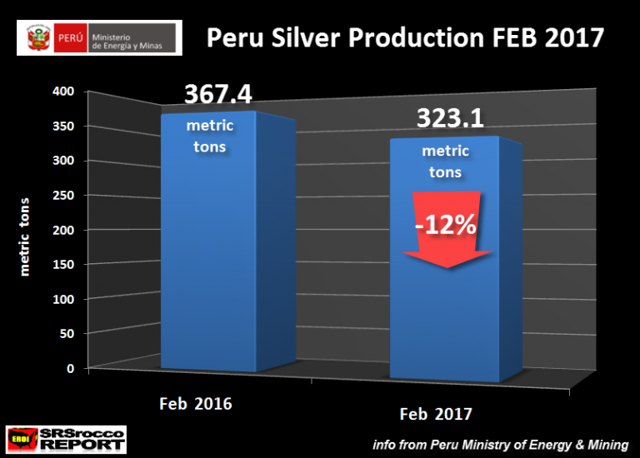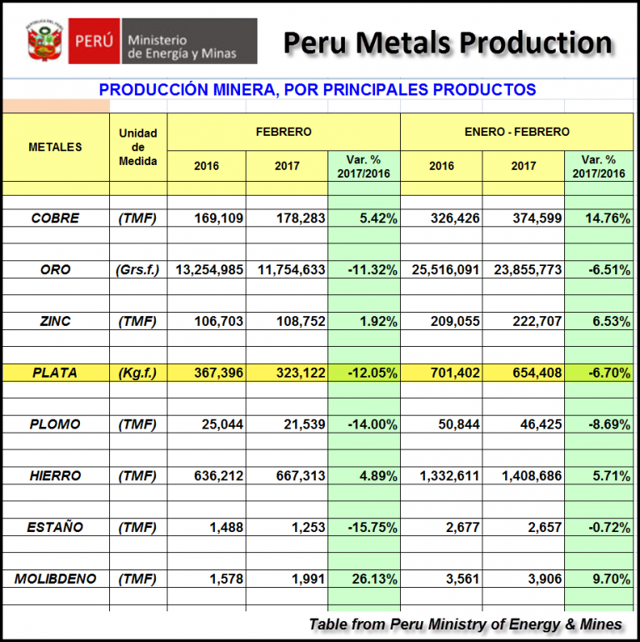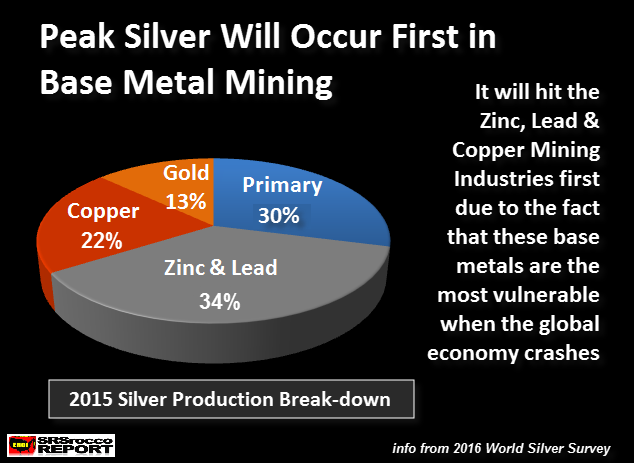I’ve talked a lot lately about the rise of Peru. With this week’s apparent approval of the new Quellaveco mega-mine being the latest addition to output here.
The emergence of new Peruvian mining projects is big news for the global copper market. Because there’s been a lot of question lately about where supply growth globally might be coming from.
As the chart below shows, Peru is a big part of the answer. Of the world’s top copper-producing nations, Peru is the only one showing significant yearly production growth over the last five years.
Peru is the only one among the world’s top copper-producing nations to show sustained and significant growth over the last five years (source: U.S. Geological Survey)
Between 2012 and 2016, Peru’s copper production jumped 77% to 2,300 tonnes per year. Putting it solidly into second place in global output.
During the same period, other big copper nations struggled. Top producer Chile was flat, as were #3 and #5 China and Australia.
Number-four copper producer America has managed to steadily grow production each year since 2012. But the scope has been small — with U.S. producers upping output by 20.5% or 240 tonnes per year. Not even a quarter of the supply growth Peru has seen.
But there is one other nation that was having a good run the past half-decade: Africa’s top copper producer, Democratic Republic of Congo.
As the chart above shows, DR Congo saw a big growth spurt between 2012 and 2014 — when copper production jumped 430 tonnes, or 72%.
But then, producers hit the wall. Output in 2015 was flat, before falling to 910 tonnes in 2016 as copper prices declined.
The big reason DR Congo stalled is electricity. This is a massive country — the 11th largest in the world by area — but has one of the lowest rates of national electricity availability.
Look at some numbers. Nationwide, only 9% of DR Congo’s population has access to electricity. Even in urban centers, the electrification rate is just 19% — dropping to 1% in the countryside.
The government here has tried to allocate power to the copper mining sector. But there just isn’t enough to go around — only about half of the nation’s 2,500 MW of installed generating capacity (almost entirely hydropower) is functional.
Nationwide the power shortfall is estimated at 750 MW. With the mining sector alone short about 300 MW.
That lack of power has almost completely frozen new mine development. Which is why this week’s power import deal with South Africa is so critical — if more electricity does arrive, things could be de-bottlenecked enough to get new operations up and running.
That would be very significant for global copper supply. Potentially allowing DR Congo’s output to resume the upward trend it enjoyed during 2012 to 2014.
In fact, the country might be one of the only places with big growth potential outside of Peru.
There’s no shortage of in-ground copper resources in DR Congo — unlike the U.S. and Australia, where big, new discoveries are hard to come by (although developments like in-situ leaching in Arizona could change that).
The country is also largely free of the regulatory problems and social opposition that have plagued Latin American copper nations. It has its own challenges to be sure — but the government has shown willingness to move developments along, unlike spots like Chile where lawmakers are getting more restive.
Even Peru’s future is uncertain. Anglo American walked away from the Michiquillay project a few weeks ago, saying government terms were too steep. And big copper mines in the country like Las Bambas have seen significant protests from local communities the past year.
DR Congo’s power problems aren’t easy to solve. Even the term sheet signed this week with South Africa’s Eskom still has a way to go — with lingering doubts over the Congolese ability to pay bills being a potential stumbling block.
But if an import deal can get done, it opens up one of the clearest paths to copper supply growth anywhere in the world. That’s a key development to watch for all market players, including project developers.


